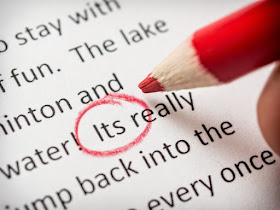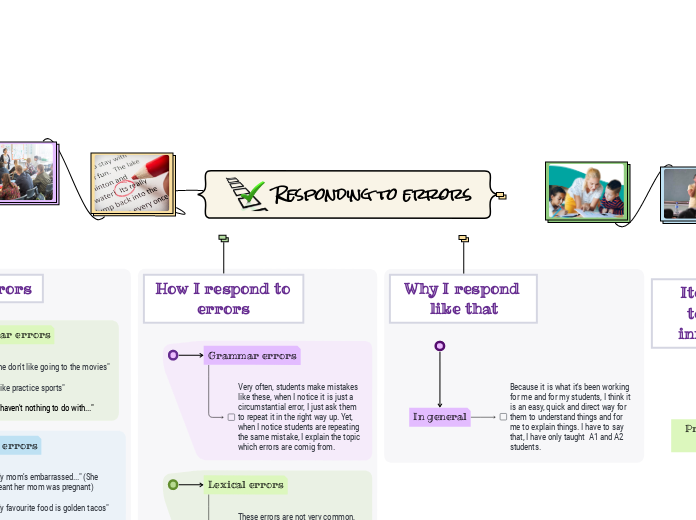Responding to errors
Types of errors
Grammar errors
"She don't like going to the movies"
"I like practice sports"
"It haven't nothing to do with..."
Lexical errors
"My mom's embarrassed..." (She meant her mom was pregnant)
"My favourite food is golden tacos"
"It is nine in point"
Pronunciation errors
"We have to live(laif) the life"
"Can you spell(spil) it, please?"
"Should I leave(lief) the door open?"
How I respond to errors
Grammar errors
Very often, students make mistakes like these, when I notice it is just a circumstantial error, I just ask them to repeat it in the right way up. Yet, when I notice students are repeating the same mistake, I explain the topic which errors are comig from.
Lexical errors
These errors are not very common, but when they happen I approach them similarly as the ones above. If I notice it is circumstantial, I tell them the right word to use and then I ask them to repeat it. On the other hand, if it is constantly happen, I give them explanation, examples and exercises.
Pronunciation errors
I approach these errors this way: When students pronunciate a word wrong. First, I tell them the right way to pronunciate it. Then, I give them some similar words which have the same pronunciation. Finally, I ask them to repeat after me.
Why I respond like that
In general
Because it is what it's been working for me and for my students, I think it is an easy, quick and direct way for them to understand things and for me to explain things. I have to say that, I have only taught A1 and A2 students.
Iterviewed teacher's information
Prof. Karina Lizeth Cruz Santiago
Escuela Primaria Vicente Guerrero
C.C.T. 15EPR1839I
Calle Avena S/N, Ampliación San Agustín, Chimalhuacán, EDOMEX

/GettyImages-525409809-58d969a33df78c5162422a9f.jpg)
Video



